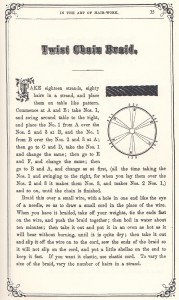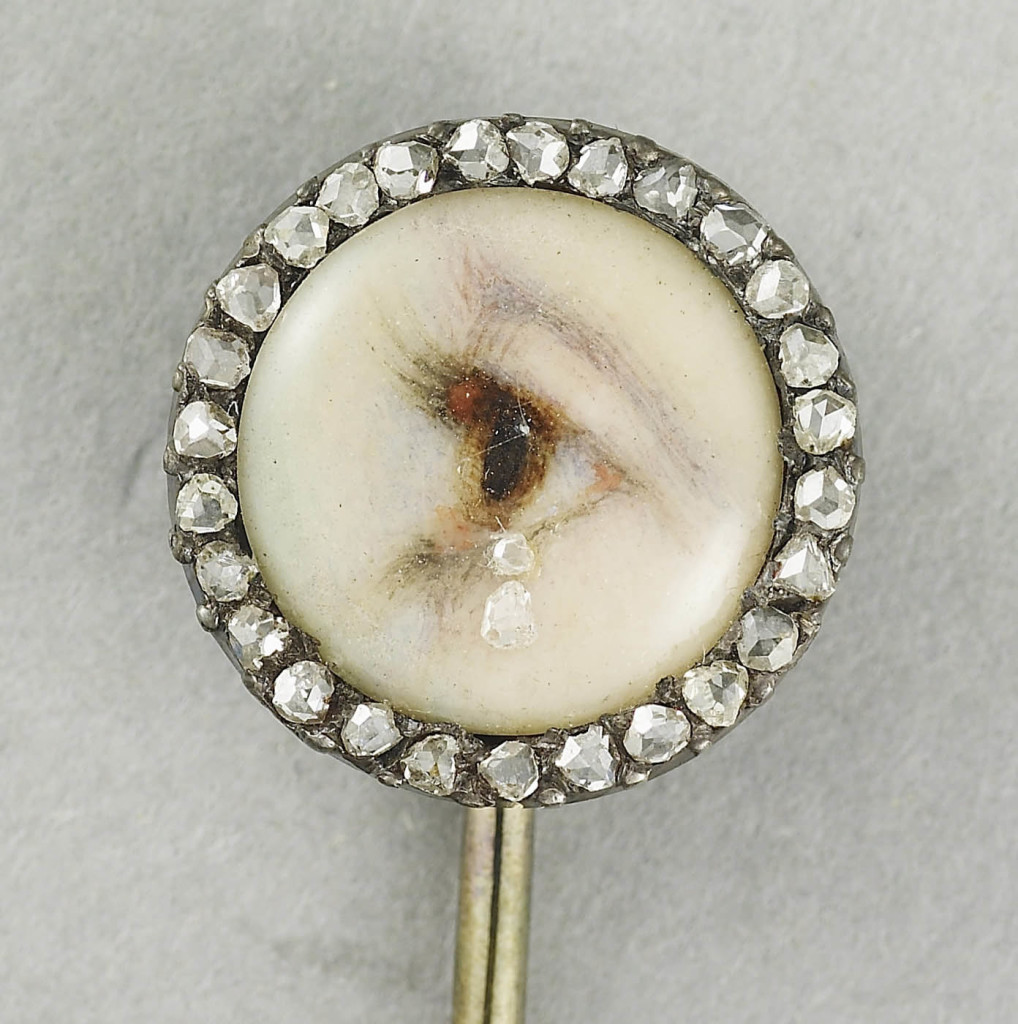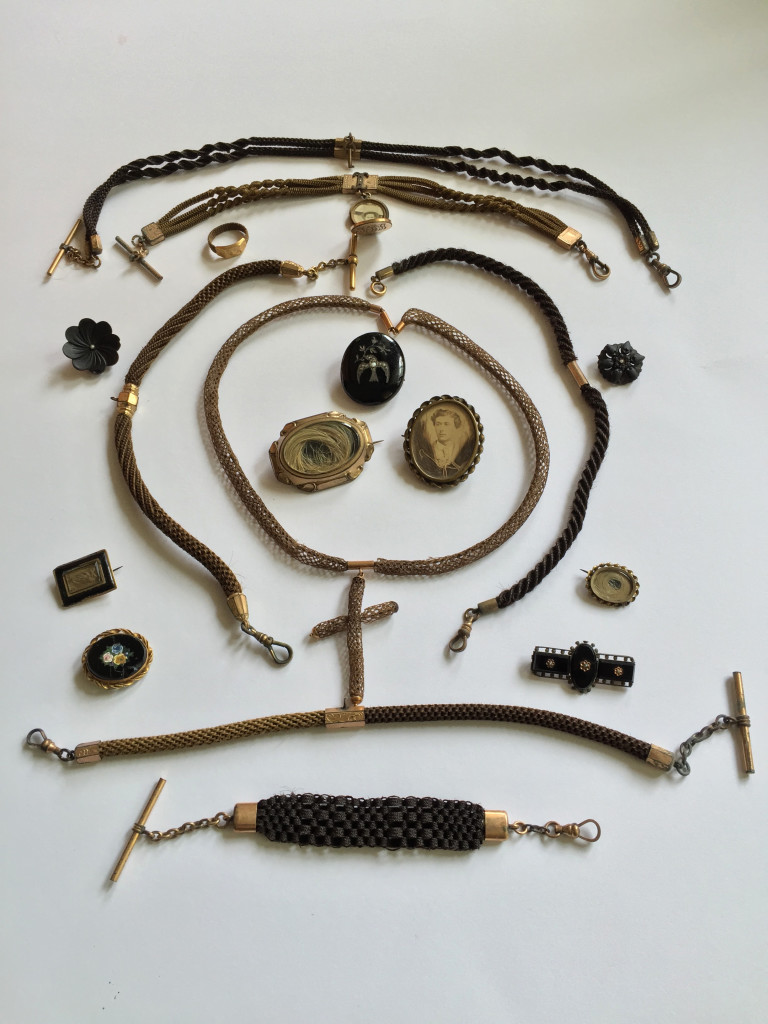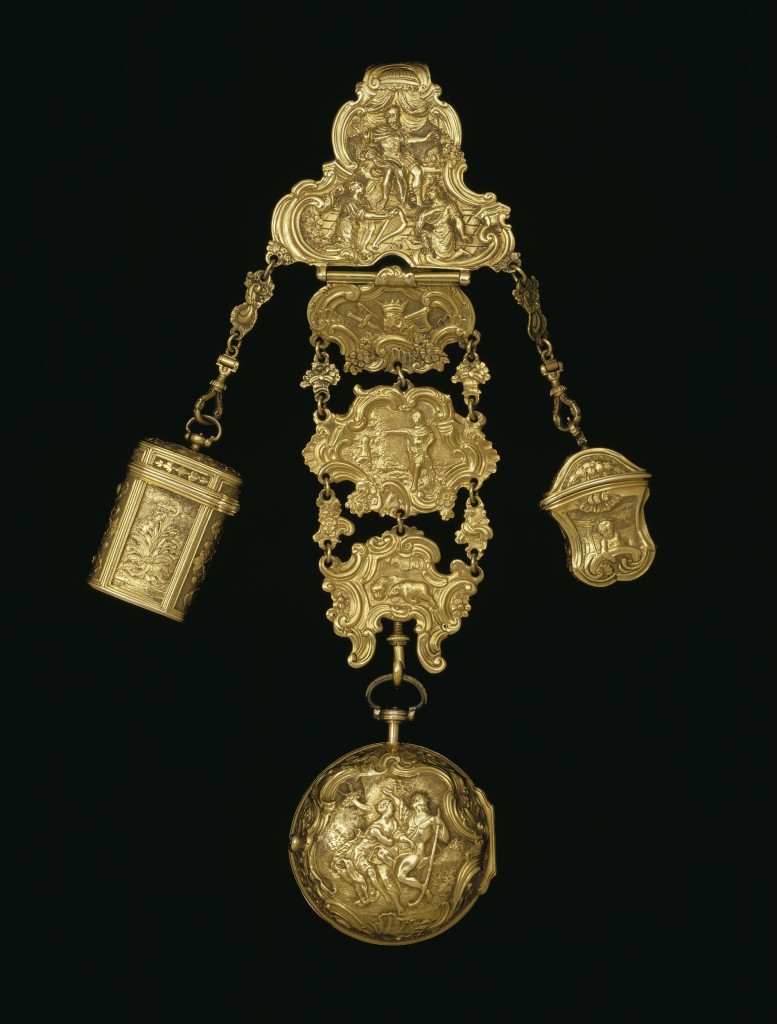Art of Hairwork 3: Victorian Hairwork Fob Chain With Locket
Charms and accessories on hair fob chains and necklaces are as bespoke to the piece as the hair itself. It is important for the collector to understand that these are the elements of daily fashion that a gentleman or lady (depending on the accessory) could adorn themselves with to remind them of their loved one. One element here to demystify is that they were used predominantly for mourning purposes and this couldn’t be further from the truth. As we have seen with hair as a material, this was fashionable and a way to show ones love and still keep that functional.
The design of the centre clasp is one of the more important features to focus upon when we look at this particular fob chain. Here, we look to Mark Campbell’s Art of Hair Work to match it close enough to approximate its date and how it was integrated into the chain.
Looking at the page, you can see the similar elements to f.265; yet this chain fitting tapers within the centre and has the loop for charm attachment. There is also the random floral design flourish to the edge of the chain’s fitting that carries through the elements also seen on the locket charm itself.
This is a motif that can be traced to the 1810s, when there was experimentation of the floral Rococo elements in jewels, particularly flanking the bold, Gothic Revival styles, but it survived and maintained in sentimental jewellery throughout the 19th century and many of these elements are still popular in jewels and symbolism today. Note the two forget-me-nots within the design of the locket, which is an important symbol to match with the hairwork itself:
Flower symbolism conveys messages that are engrained within our culture, through the last two centuries of re-enforcing their statement as symbols. The 18th and 19th centuries Romantic movement helped establish a push away from the paradigms of ecclesiastical and traditional worship, while putting the focus back upon the natural world around and the passions of the human experience. Hence it is only natural (pun intended) that as the 19th century 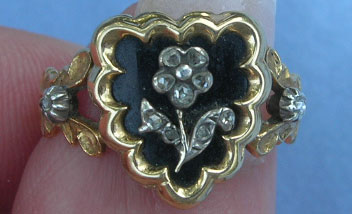
“Forget-me-not, O Lord!” is what a poor German knight shouted as he fell into a river. He and his lady were picking flowers by the side of the river at the time, no doubt enjoying the beautiful day around them, and yet as fate would have it, the knight’s armour dragged him down to the bottom as he fell in. Upon his cries to the Lord, he threw the blue posy of flowers to his loved one and promptly drowned. This little tale reportedly dates to around the 15th century, but no doubt had different permeations along the way, as romantic stories often do. Hence, the concept of remembrance, eternal love and faithfulness grow from this.

Now that we have the tales out of the way, the symbolism of the forget-me-not is obviously implied within its name. It should also be noted that the flower grows quite ubiquitously in Europe, America and Asia. Its first use in English literature is reportedly from c.1532 and is otherwise named Myosotis (mouse’s ear). Interestingly enough is the rise of the flower’s popularity c.15-16th centuries. This is what we, as jewellery historians, need to understand. From this, we have the popularity of the posy ring and its use as a love token in jewellery. The posy (poesy, posie, posey) emerged at a time when modern society was developing through a shift back to the personal and emerging from the middle ages and its strict adherence to ecclesiastical living. Giving a ring with an inscription on the inside as a token of love was a profound statement, it showed that relationships were increasingly interpersonal and not decreed before god. It was between the couple. Hence, the forget-me-not was used as a decoration (often crude) in some of these rings to denote its message of love and remembrance.
During the 17th and 18th centuries, the use of the forget-me-not didn’t change, however, it did blend in well with the Rococo and Baroque excess of design well enough that it could balance with other flowers and leaf motifs. By the time of the Neoclassical period, its use was relegated more towards being a footnote in memorial jewel depictions painted on ivory. During this time and the rise of hairwork weaves becoming mainstream and popular, the forget-me-not did become a symbol used to create floral depictions from hair.
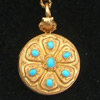
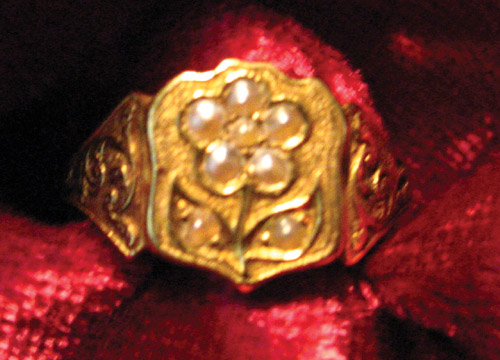
“Take eighteen strands, eighty hairs in a strand, and place them on table like pattern. Commence at A and B: take Nos. 1, and swing around table to the right, and place the No. 1 from A. over the Nos. 2 and 3 at B, and the No. 1 from B over the Nos. 2 and 3 at A; then go to C and D, take the Nos. 1 and change the same; then go to E and F, and change the same; then go to B and A, and change as at first (all the time taking the Nos. 1 and swinging to the right, for when you lay them over the Nos. 2 and 3 it makes them Nos. 3 and makes Nos. 2 Nos. 1) and so on, until the chain is finished.
Braid this over a small wire, with a hole in one end like the eye of a needle, so as to draw a small cord in the place of the wire. When you have it braided, take off your weights, tie the ends fast on the wire, and push the braid together; then boil in water about ten minutes; then take it out and put it in an oven as hot as it will bear without burning, until it is quite dry; then take it out and slip it off the wire on the cord, sew the ends of the braid so it will not slip on the cord, and put a little shellac on the end to keep it fast. If you want it elastic, use elastic cord. To vary the size of the braid, vary the numbers of hair in a strand.”
Note the process of setting the hair by boiling and baking it, then adding shellac. This is the most common aspect of hairworking that is necessary to set the shape. As to the twist chain style of this chain, it is one of the more common styles that you will find to many fob chains in varying degrees of condition. This is mostly due to the durability of the weave and the popularity of hair as a material.






